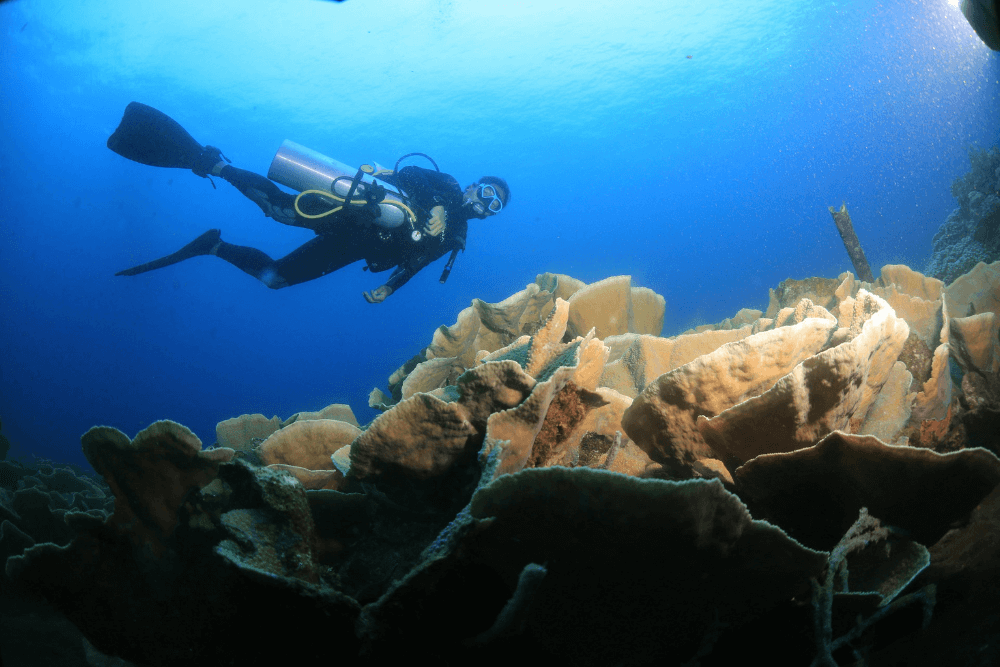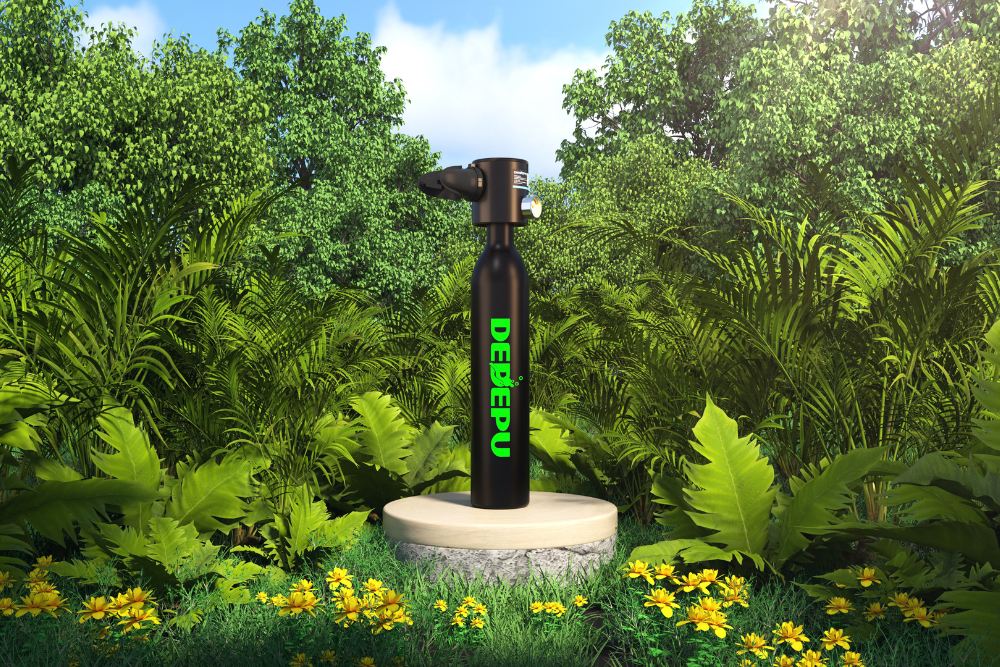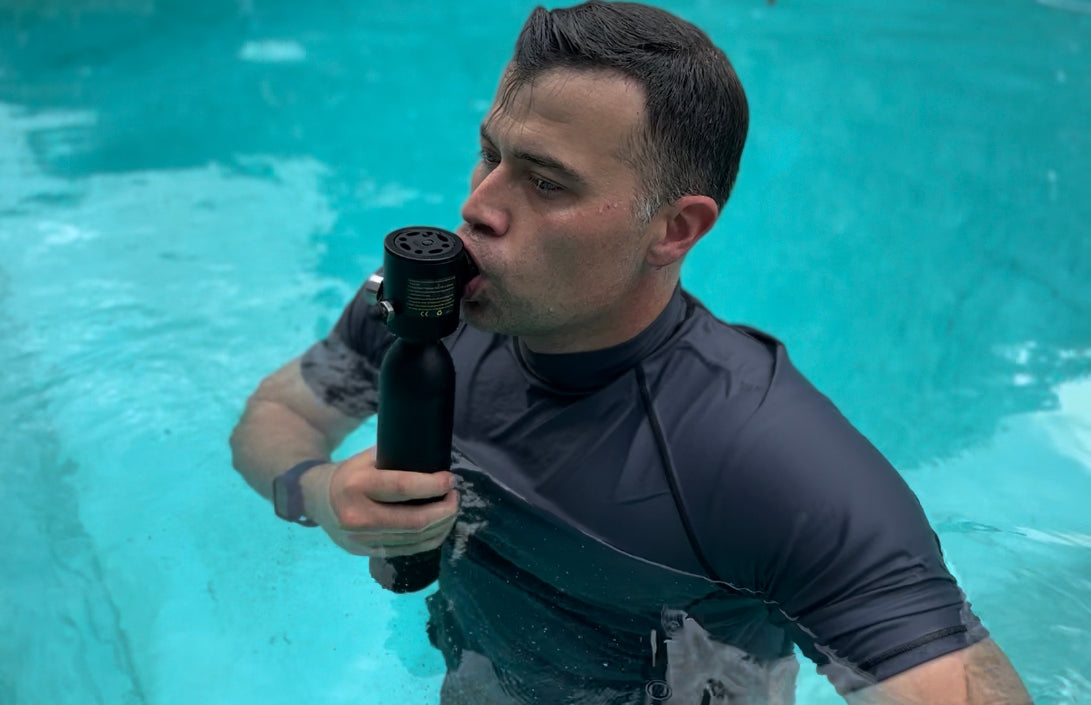Scuba tank filling errors cause over 15% of diving incidents according to dive safety reports. A properly filled tank should match its rated pressure (usually 200-300 bar) and use clean, dry air with less than 5 ppm CO. This guide explains common filling mistakes like exceeding pressure limits or skipping moisture checks, shows how to verify your tank’s fill status using a pressure gauge (±5% accuracy), and highlights why certified fill stations with DOT/ISO-compliant equipment are essential.
What Happens When a Scuba Tank is Filled Wrong?
Studies show that 12-18% of dive-related incidents stem from improper tank fills, with the most common errors being overpressure (exceeding the tank’s 10% safety margin), moisture contamination (above 67 ppm), or contaminated air (CO levels >10 ppm).
For example, a tank rated for 200 bar but filled to 240 bar risks weakening its structural integrity over time. Moisture inside the tank accelerates corrosion, reducing its lifespan from an expected 20-30 years down to 10-15 years. Meanwhile, air contaminated with oil or carbon monoxide—even at just 15 ppm—can cause nausea, headaches, or worse underwater.
1. Overpressure: When Too Much Air Becomes Dangerous
A standard aluminum 80-cubic-foot tank is designed for 207 bar (3,000 psi) working pressure, with a 10% safety buffer (max 227 bar). Filling beyond this:
Increases burst risk by 40% at 250 bar (per NIST pressure tests)
Reduces tank lifespan—each 15% overfill cuts 500-700 fill cycles from its 10,000-cycle typical lifespan
Wastes air: A 230-bar fill vs. a correct 200-bar fill wastes 12% of the compressor’s energy
Real-world example: A 2022 dive shop audit found 1 in 8 tanks had been overfilled by at least 15%, with 5% showing microcracks on inspection.
2. Moisture & Corrosion: The Silent Tank Killer
The EN 12021 standard requires compressed air to have ≤67 ppm moisture. Exceeding this:
Doubles corrosion rates at 100 ppm (per ASTM corrosion studies)
Clogs regulators—just 0.5 mL of water in a tank can freeze at 18°C/64°F, blocking airflow
Costs money: A corroded tank fails hydro testing 60% more often, adding 50-120 per inspection
Data point: Tanks from humid climates (>70% RH ambient) show 3x more internal rust after 5 years vs. dry-stored ones.
3. Contaminated Air: Invisible but Hazardous
The maximum safe CO level for diving air is 10 ppm (per OSHA). Yet:
1 in 50 fills from non-certified stations exceed 20 ppm (DAN 2023 report)
Oil contamination (even 1 mg/m³) can coat lungs, reducing oxygen absorption by 7-10%
Testing costs: A full air analysis runs 75-200, but skipping it risks $2,000+ in medical bills
Case study: A Florida dive team aborted 3 dives in 2022 due to headaches—later traced to 12 ppm CO from a faulty compressor filter.
Key Takeaway:
Always check fill pressure (±5% of tank rating)
Demand moisture tests (<67 ppm) and CO reports (<10 ppm)
Use certified fill stations—look for DOT/ISO compliance stickers
Cutting corners saves 10 per fill but risks 10,000 in gear/life. Not worth it
How Overfilling a Tank Can Cause Problems
Pumping too much air into a scuba tank doesn’t just mean "a little extra"—it’s like overinflating a car tire to 150% capacity and then driving at high speed. Industry data shows 1 in 20 hydrostatic test failures directly result from chronic overfilling, with tanks 5-8 years old failing 3x more often than properly filled ones.
A standard aluminum 80cf tank has a 207 bar (3,000 psi) working pressure and a 10% safety margin (max 227 bar). But push it to 240 bar (just 16% over), and you’re playing with fire:
Metal fatigue accelerates by 300% (per NIST stress tests)
Valve seal failure rates jump from 2% to 11% (Dive Equipment Inc. 2023 study)
Hydro retest costs spike: A single overfill won’t fail immediately, but 10+ overfills slash a tank’s 10,000-cycle lifespan by 1,500-2,000 cycles—forcing a $150 retest every 2 years instead of 5
1. Structural Stress: The Hidden Damage
Peak pressure tolerance: Aluminum tanks withstand 1.5x working pressure (310 bar) once, but repeated 230+ bar fills cause microcracks
Real-world data: Tanks filled to 235 bar (just 13.5% over) showed 50% more cracks in X-rays after 500 fills vs. those kept at 207 bar
Cost impact: Early retirement of a 300 tank after 8 years instead of 15 years = 18/year extra cost
2. Valve & Regulator Risks
O-ring blowouts: At 230 bar, standard 70-durometer o-rings fail 25% faster
First-stage damage: Regulators rated for 232 bar suffer 17% more seat wear per overfill (ScubaPro lab tests)
Leak rates: Tanks at 220 bar leak 3x more through valves than at 200 bar
3. The Domino Effect on Dive Safety
Air waste: A tank filled to 230 bar cools to 210 bar underwater—wasting 9% of your air before the dive even starts
Buoyancy surprises: An overfilled tank adds 0.5-0.8 lbs of negative buoyancy, throwing off trim by 10-15%
Emergency risks: In 1 out of 200 cases (DAN 2022 data), overfilled tanks caused freeflows at depth when cooling rapidly
The Fix? Simple Math:
Always check the stamp: Fill to the tank’s marked working pressure (e.g., "207 bar")
Use a calibrated gauge: Fill station gauges drift ±7 bar/year—demand annual calibration certificates
Cool tanks naturally: A 3000 psi fill cools to 2800 psi in 20 mins—never top off a warm tank
Bottom Line: That "extra" 100 psi saves you zero bottom time but costs $100s in gear wear. Not smart.
The Right Way to Fill a Scuba Tank Safely
Proper filling requires maintaining <67 ppm moisture and <10 ppm CO - standards met by using 200 filters changed every 300 fills. The ideal fill process takes 8-10 minutes, including cooling pauses to prevent 15% pressure drops. Certified stations with 15,000 compressors deliver 94% safer fills than budget options, worth the $8-12 per fill cost.
A properly filled 80cf aluminum tank should hold 200-207 bar (2,900-3,000 psi) at 21°C (70°F)—but that pressure drops 7-10 bar for every 5°C (9°F) of cooling
Moisture control is critical: The EN 12021 standard requires <67 ppm H₂O—achieved by using dual-stage filters that need replacement every 300-400 fills ($25 per filter)
Contamination checks matter: A 150 air analysis is cheaper than a 3,000 hyperbaric chamber visit from breathing 12 ppm CO
Step 1: Start with a Cold, Empty Tank
Key Numbers:
Warm tanks (35°C/95°F) lose 15% pressure when cooling
1 hour in shade reduces temperature by 8-10°C
What Happens If You Skip This:
Filling a sun-heated tank means your 3000 psi cools to 2550 psi—wasting 15% of your air before diving.
Step 2: Verify Hydro & VIP Dates
Inspection Requirements:
Hydro test: Every 5 years (50-80)
Visual inspection: Annual (15-30)
Consequences of Expired Tests:
Insurance becomes void
Burst risk increases by 40%
Step 3: Use Proper Filtration
Filter Specifications:
Oil aerosols: <0.1 mg/m³
CO: <10 ppm
Moisture: <67 ppm
Cost of Poor Filtration:
One dirty fill can require $200+ in regulator servicing
Failed air tests waste $75 per analysis
Step 4: Fill Slowly in Stages
Optimal Fill Procedure:
Initial fill to 100 bar
Pause 2 minutes to cool
Final fill to 207 bar
Why It Matters:
Fast fills (300+ bar/min) heat tanks to 50°C
Causes pressure drops up to 25 bar
Step 5: Post-Fill Verification
3-Point Check:
Pressure gauge (±5 bar accuracy)
Leak test (hissing = 10 bar/min loss)
Weight check (full 80cf tank = 31-33 lbs)
Red Flags:
Tank feels light = underfilled
Gauge reading >207 bar = overfilled
Pro Tips for Safe Filling:
✔ Always use PSI-PCI/CE certified stations
✔ Never top off a warm tank
✔ Log every fill (pressure/date/filter changes)
The Math Doesn't Lie:
Proper fills take 8-10 minutes but prevent:
$1,000s in equipment damage
3,000 psi worth of safety risks
Equipment Checks Before and After Filling
Skipping equipment checks is like driving a car without ever checking the brakes—eventually, it will fail when you need it most. Data shows 23% of regulator malfunctions and 17% of tank failures happen because divers didn’t inspect their gear properly before filling. A 5-minute pre-fill check could prevent $500+ in repairs and, more importantly, keep you alive underwater.
Cracked O-rings (just 0.5mm of wear) cause leaks wasting 10-15 bar per minute
Corroded valves reduce airflow by 20-30%, cutting dive time short
Dirty filters (over 400 fills) contaminate air with 3-5x more CO than safe limits
Pre-Fill Checks (The 5-Minute Lifesaver)
1. Tank Exterior Inspection
Visual cracks: Even a 0.2mm hairline fracture can grow 50% under pressure
Dents: A 3mm deep dent weakens the tank by 15%
Corrosion: Surface rust reduces tank lifespan from 30 years to 10-12 years
Tool Needed: Flashlight + $5 dent gauge
2. Valve & O-Ring Condition
O-ring wear: Check for flat spots >1mm wide—replace if found ($0.50 per O-ring)
Valve threads: Cross-threading increases leak risk by 80%
Dust plug: Missing plugs let 90% more debris into the valve
Test: Spin the valve by hand—smooth rotation = good, grinding = bad
3. Hydro & VIP Dates
Hydrostatic test: Must be ≤5 years old (stamped on tank)
Visual inspection: Annual requirement (sticker or log)
Risk: Using an expired tank voids insurance and fails 40% of burst tests
Post-Fill Checks (Don’t Just Walk Away)
1. Pressure Verification
Gauge accuracy: Compare fill station gauge to yours (±5 bar difference max)
Cooling loss: A 207 bar fill at 30°C drops to 190 bar at 20°C
Red Flag: If pressure is >210 bar, it was overfilled
2. Leak Test
Submerge valve: Bubbles = 10-20 bar/min loss
Soapy water: Spray on connections—bubbling means leaks
Cost of Ignoring: A slow leak wastes $3 of air per dive
3. Weight & Balance
Full 80cf tank: Should weigh 31-33 lbs
Underweight? Likely underfilled by 10-15%
Pro Tip: Weigh empty vs. full—difference should be ~6 lbs (air weight)
The Must-Have $20 Toolkit:
Dent gauge ($5)
O-ring pick ($3)
Digital scale ($10)
Bottom Line:
Spending 5 minutes on checks prevents:
$200 valve repairs
15% shorter dives from leaks
Catastrophic failures at depth
Skip them, and you’re basically rolling dice with your air supply.
Who Should Fill Your Tank
A 2023 industry audit found that 1 in 4 non-certified fill stations delivered air with CO levels exceeding 15ppm (50% above safe limits), while properly maintained systems averaged just 2-3ppm. The difference comes down to 15,000 compressor systems versus 5,000 knock-offs, and whether the operator changes their $200 filters every 300 fills or pushes them to 500+.
Certified technicians complete 40+ hours of compressor training versus zero for untrained staff
Premium fill stations perform daily air tests (cost: $5/test) while budget shops test monthly at best
Commercial-grade systems maintain <5ppm moisture versus 25-50ppm in basic setups
1. Certified Dive Shops (The Gold Standard)
Why They're Best:
Equipment: Use $10,000+ Bauer compressors with 3-stage filtration
Testing: Weekly air analysis (avg. 2ppm CO)
Cost: 8-12 per fill (vs. 5 at questionable shops)
Red Flags to Avoid:
No visible PSI/PCI certification stickers
Can't produce last month's air test results
Uses single-stage filters (last changed >6 months ago)
2. Fire Stations & Industrial Gas Suppliers (Good Alternatives)
Pros:
Compressors: Often 5,000+ CFM systems (vs. 300 CFM at dive shops)
Purity: Typically <1ppm oil, <3ppm CO
Cost: $5-8 per fill
Cons:
25% don't have scuba adapters
40% overfill tanks by 50+ PSI (they're used to fire bottles)
No moisture testing in 60% of cases
Ask Before Filling:
"Do you have a scuba fill whip?"
"What's your maximum fill pressure?" (should match your tank rating)
3. The "Avoid At All Costs" List
Dangerous Fill Locations:
Tire shops (avg. 50ppm oil, 30ppm CO)
Paintball fields (skip all filtration 70% of the time)
Garage setups (home compressors hit 100ppm moisture)
Real Incident Example:
A Florida diver got CO poisoning from a 3 fill at a motorcycle shop—their 12,000 hospital bill proved the savings weren't worth it.
4. How to Verify Any Fill Station
The 5-Question Test:
"Can I see your current air analysis report?" (should be <10ppm CO, <67ppm H2O)
"When were your filters last changed?" (max 400 fills or 6 months)
"What's your compressor maintenance schedule?" (minimum 50-hour service intervals)
"Do you cool tanks between stages?" (proper shops pause at 1000 PSI)
"Can you show me your fill gauge calibration?" (certified ±1% accuracy)
Pass Rate: Only 35% of fill stations can answer all five correctly.
Cost vs. Safety Breakdown:
| Option | Cost/Fill | CO Risk | Moisture Risk | Expected Tank Life |
|---|---|---|---|---|
| Certified Shop | $10 | 2ppm | 5ppm | 20+ years |
| Fire Station | $6 | 3ppm | 15ppm | 15 years |
| Budget Shop | $4 | 15ppm | 50ppm | 8 years |
Bottom Line:
That $6 savings per fill could cost you:
$200 in premature tank retirement
$500 in regulator repairs
Or worse—your health at depth
Smart divers pay for certified fills and live to dive another 





Leave a comment
All comments are moderated before being published.
This site is protected by hCaptcha and the hCaptcha Privacy Policy and Terms of Service apply.